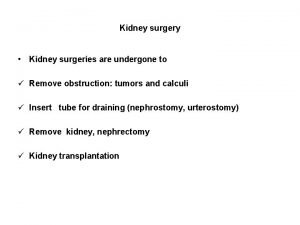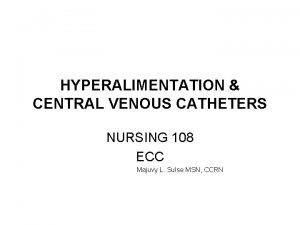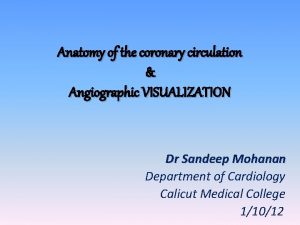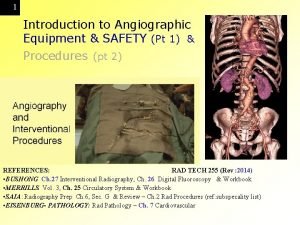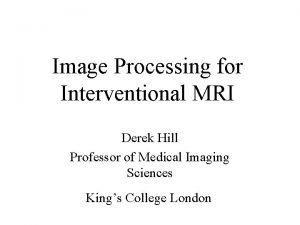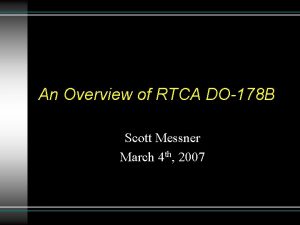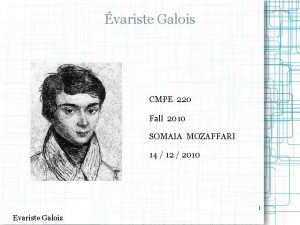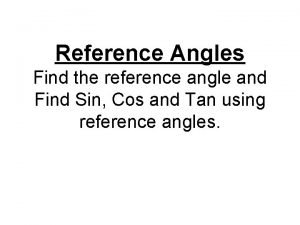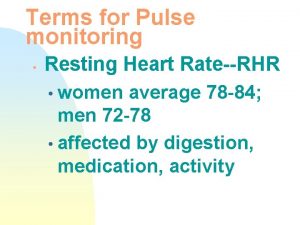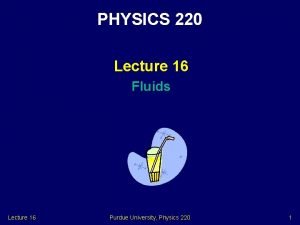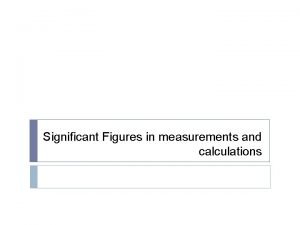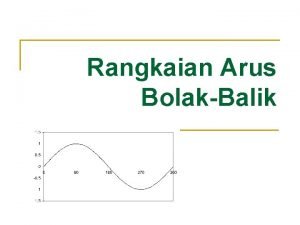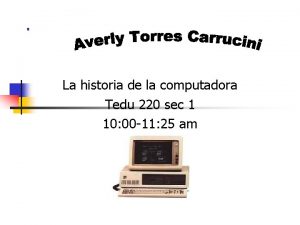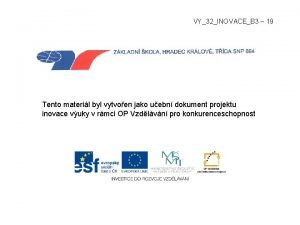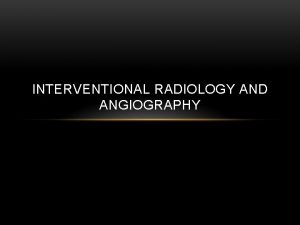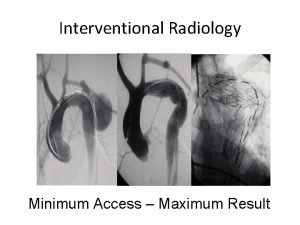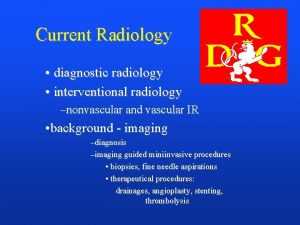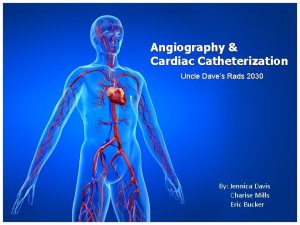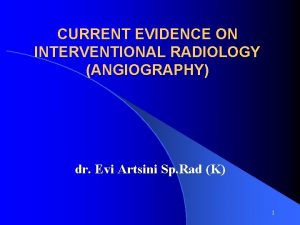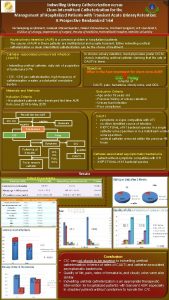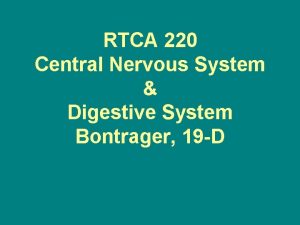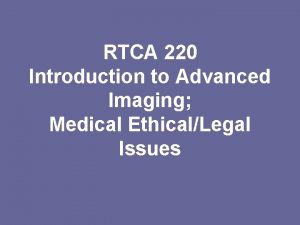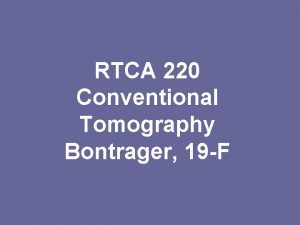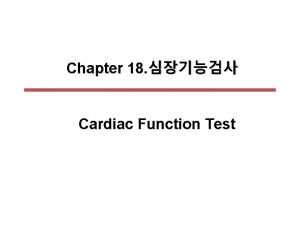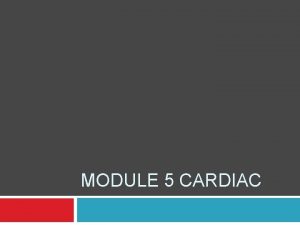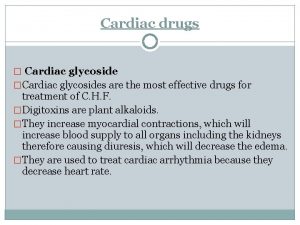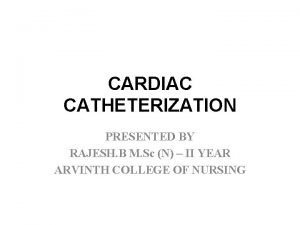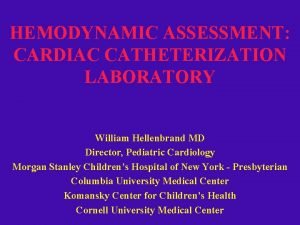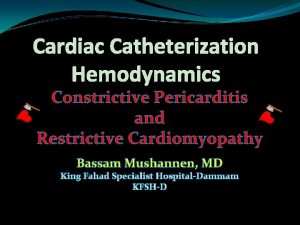RTCA 220 General Angiography Cardiac Catheterization Interventional Radiology
































































- Slides: 64

RTCA 220 General Angiography, Cardiac Catheterization, & Interventional Radiology Bontrager: 17

General Angiography, Cardiac Catheterization, & Interventional Radiology Abstract: This section will cover general angiography. Emphasis will be placed on the equipment such as the typical angiography suite, guide wires and catheters, indications and contraindications for an angiographic procedure, contrast media, patient preparation and postprocedure care. Included will be a discuss on various angiographic procedures, including venography; cardiac catheterization; and interventional procedures. Objectives: At the end of this section, the student will be able to: • define angiography. • list and discuss the major arteries and veins in the body. • discuss the contrast used in angiography, including its advantages and disadvantages. • list and discuss the various injection techniques used in angiography. • list and discuss the equipment needed in angiography.

General Angiography, Cardiac Catheterization, & Interventional Radiology • name and discuss the various angiographic procedures, their indications, anatomy visualized, and overhead films obtained discuss the various venography procedures, their indications, anatomy visualized, and overhead film obtained • define cardiac catheterization. • briefly discuss the history of cardiac catheterization. • discuss the general indications and contraindications of cardiac catheterization. • list and discuss the various diagnostic and interventional —pharmacological and manipulative—cardiac catheterization procedures. • list and discuss the various interventional radiographic procedures. • discuss the future of Interventional Radiography

General Angiography • radiographic examination of the __________ following injection of a ______ contrast medium • may be performed in any vessel of the body – including biliary vessels, lymphatic vessels, arteries, and veins • informed consent signed

General Angiography Equipment 1. Requires a separate angiographic suite that can house specialized x-ray tube(s) and table and other equipment needed for angiographic procedures 2. Sometimes requires general anesthesia equipment 3. Generator – must be 3 -phase, 12 pulse or __________ – capable of 1000 -1500 m. A – short, ______exposure times – biplane equipment requires two tubes/C-arms with two separate generators

General Angiography Equipment 4. X-ray tube – _____ speed rotating anodes – _____ focal spot (0. 3 mm) ideal – larger focal spot (0. 6 mm) needed for some procedures

General Angiography Equipment 5. Single or biplane image intensification units – _____ type equipment preferable so patient does not need to be moved during procedure

General Angiography Equipment 6. Angiographic table – horizontal with ____ floating capability – should be programmable for when performing procedures on peripheral regions

General Angiography Equipment 7. Pressure injector – administers contrast at a consistent _______ and _______ – contains a control panel, ____ drive mechanism, syringes, and heating system


General Angiography Equipment 8. Emergency Equipment – ____ monitoring device – Pressure monitoring device – ________ devices

General Angiography • Injection Methods 1. Direct Injection – Direct stick into the _______ under examination 2. Percutaneous Catheterization – Seldinger technique – allows for the introduction of a needle, guide wire, and ______ into a specific vessel



General Angiography Equipment • Catheters and Guide wires 1. Will vary in length – 100 cm to 145 cm – and _____ • Contrast Media 1. organic, _____ based 2. ionic or non-ionic 3. ______ – may create an uncomfortable sensation since large volume of contrast is injected over a short period of time

Catheters Guidewires

General Angiography • Radiation Protection 1. _______, distance, shielding essential for radiographers 2. limit _____ size

General Angiography Procedures 1. Cerebral Angiography • Vessels of the brain


Coronal Sagittal

General Angiography Procedures 2. Pulmonary Angiography • Pulmonary _____


General Angiography Procedures 3. Abdominal Angiography • Branches off the abdominal _______


General Angiography Procedures 4. Aortic Arch (Three Vessel Study) • demonstrates aortic arch and the three vessels that rise from it • _____ view (patient positioned or C-Arm angled) helps prevent superimposition of the vessels and open the aortic arch

General Angiography Procedures 5. Peripheral Angiography • radiographic study of the vessels of the upper or lower limbs following the injection of contrast medium • Abdominal Aortography with _______


General Angiography: Peripheral Venography • radiographic study of the _____ veins from the ankle to the pelvic area, or the wrist to the shoulder • frequency declining due to vascular sonography (Doppler)


General Angiography: Venography • Vena Cava Venography 1. Abdominal venography • demonstrates the inferior vena cava and its branches particularly the ____ and _____ veins

General Angiography: Venography 2. Superior Vena Cava Venography • may be performed through ______ injection via the median cubital vein or catheterization and pressure injection

Cardiac Catheterization • one of the most common angiographic procedures performed in the US • may be performed as a cardiac ________ or angiocardiography • includes ________measurements • performed for a wide variety of problems dealing with the heart • Blood Supply to the Heart • Pulmonary Circulation

Pulmonary & Systemic Circulation

Cardiac Catheterization • Indications 1. Any condition that compromises blood _______ and ______ to the heart – chest pain – angina 2. major complication after acute ____(shock, CHF, valvular dysfunction • Contraindications 1. only absolute contraindication is the refusal of a mentally ______ patient to consent to the procedure

Cardiac Catheterization • Radiation Protection 1. T, D, S precautions 2. minimal fluoroscopic exposure _____ 3. decrease field size limit • Equipment 1. similar to that in the regular angiography suite 2. CC rooms contain more patient ________ equipment

Cardiac Catheterization



Cardiac Catheterization • Angiocardiography 1. radiographic evaluation of the _______ of the heart and various valves 2. hemodynamic monitoring is the evaluation and recording of the function of the heart 3. include oxygen saturation, pressure tracings, and cardiac _______



Interventional Radiology • Uses angiographic methods primarily for the _______ of disease • intervenes in a disease process • known as ________ • may be vascular or non-vascular procedures

Interventional Procedures • vascular procedures include: 1. infusion of chemotherapy drugs or _______ materials

Interventional Procedures 2. removal of foreign bodies ← Impacted chicken bone

Interventional Procedures 3. Percutaneous Transluminal Angioplasty – PTA • purpose is to _____ a stenotic vessel or to cannulize short arterial occlusions • compresses the _______ material against the vessel wall • arterial pressures are recorded prior to procedure

Interventional Procedures • Uses a ______ catheter – catheter placed over the stenosis and inflated with contrast medium

Interventional Procedures 4. Stent placement • Cage-like metal or plastic device placed in a vessel to enlarge the lumen • acts as ______ for the vessel wall • indicated when balloon angioplasty is _________


Interventional Procedures 5. Thrombolysis • injecting a thrombus _______ agent into a vsesel that is blocked due to a thrombus

Interventional Procedures 6. Transluminal Embolization of vessels • designed to ______ blood flow through certain vessels on patients with uncontrolled hemorrhage or highly vascular tumors Pre-↑ and Post↓ embolization of a malformation in a facial vessel

Interventional Procedures 7. Inferior vena cava filter • catches an _____ before is reaches the small vessels in the heart • prevents a pulmonary embolus


Interventional Procedures • Non-vascular procedures include: 1. Percutaneous Nephrostomy Tube – catheter is introduced through the _____, into the kidney and into the renal pelvis – may be used to remove _____, drain fluid or other interventions


Interventional Procedures 2. Percutaneous Biliary Drainage • internal or external drainage of ______, stone removal, dilation of obstructed bile duct and biopsy • catheter placed within the biliary ____ with a bag attached to the catheter outside the body


Interventional Procedures 3. Percutaneous Abdominal Abscess Drainage • indicated if a simple incision cannot be performed • abscess needs to be in a safe area for a _____ placement

Interventional Procedures 4. Percutaneous Gastrostomy • performed for extended _______ of patients unable to eat, gastric decompression, or dilation of upper GI tract • indicated for patients who cannot _______ due to a variety of reasons


Interventional Procedures 5. Percutaneous Needle Biopsy • suspicion of primary or _______ malignancy • portion of the infected tissue is removed for testing

Interventional Procedures 6. Ureteric Stent Placement • Inserted in ureter • performed after a percutaneous nephrostomy • used on patients with ________ of the renal system


Interventional Procedures 7. Percutaneous Lithotripsy • extracorporeal shock wave lithotripsy (ESWL) • renal stone is obliterated until they are ______ enough to pass through the urinary system

 Self catheterization adaptive equipment
Self catheterization adaptive equipment Nursing management of urinary retention ppt
Nursing management of urinary retention ppt Rectal tube indications
Rectal tube indications Bladder catheterization
Bladder catheterization Thebasian veins
Thebasian veins Time interval difference subtraction
Time interval difference subtraction Angiographic equipment
Angiographic equipment Interventional mri
Interventional mri Type of investigation in research
Type of investigation in research Do 160 section 22
Do 160 section 22 Rtca do-311a
Rtca do-311a Do178
Do178 Rtca mops
Rtca mops Cps 220
Cps 220 How to use a multimeter on a breadboard
How to use a multimeter on a breadboard Yunan alfabesi
Yunan alfabesi Mhr=220-16
Mhr=220-16 Arkani-hamed
Arkani-hamed Variste galois
Variste galois 230-220 x 1/2
230-220 x 1/2 Georg cantor kümeler kuramı
Georg cantor kümeler kuramı How to find refernce angle
How to find refernce angle Sta 220
Sta 220 Dl 220 2006
Dl 220 2006 Smtp 220
Smtp 220 Ece 220 uiuc
Ece 220 uiuc Georg cantor kimdir
Georg cantor kimdir Sta 220
Sta 220 Lied 220
Lied 220 Women's resting heart rate
Women's resting heart rate Mhr=220-16
Mhr=220-16 220-901 braindumps
220-901 braindumps 24 ghz transverter
24 ghz transverter Program output
Program output Purdue physics 220
Purdue physics 220 Cec 220
Cec 220 Ruler sig figs
Ruler sig figs Dopamine calculation formula
Dopamine calculation formula Mhr=220-17
Mhr=220-17 N = sin i / sin r
N = sin i / sin r Cse220
Cse220 Cps 220
Cps 220 Sta 220
Sta 220 It 220
It 220 Target heart rate zone
Target heart rate zone What is maximum heart rate
What is maximum heart rate Pbb matematika
Pbb matematika Definer 220
Definer 220 Scbwa
Scbwa La computadora
La computadora Připojení zásuvky
Připojení zásuvky How to find the percentage reduction
How to find the percentage reduction Pbb dari 220 dan 1400
Pbb dari 220 dan 1400 Hkn review session
Hkn review session Transparan film örtüler
Transparan film örtüler Ece 252
Ece 252 Gamewed
Gamewed What is 222 rounded to the nearest ten
What is 222 rounded to the nearest ten Sta 220
Sta 220 220 280
220 280 Obliczanie stężenia procentowego
Obliczanie stężenia procentowego Ms&e 220
Ms&e 220 Ist 220 psu
Ist 220 psu Diferencia entre gran plano general y plano general
Diferencia entre gran plano general y plano general Where did general lee surrender to general grant?
Where did general lee surrender to general grant?

